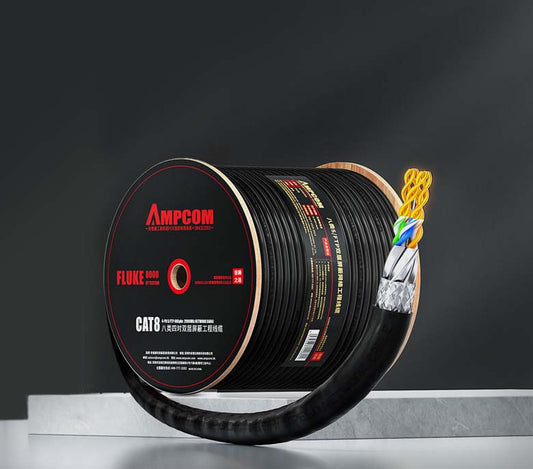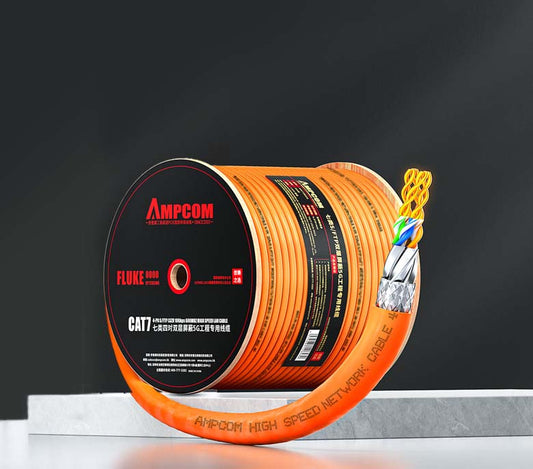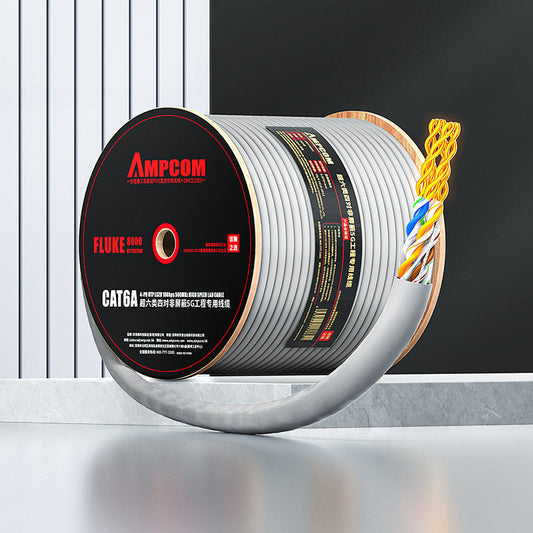STP Grounding Best Practices: Do You Really Need to Ground STP Cables?
Introduction
Shielded Twisted Pair (STP) cables are widely used in environments with high electromagnetic interference (EMI) and radio frequency interference (RFI). They offer superior protection compared to Unshielded Twisted Pair (UTP) cables. However, one of the most debated topics when it comes to STP cables is whether grounding is necessary for optimal performance.
In this guide, we will delve into the best practices for grounding STP cables, examine the advantages and disadvantages of different grounding topologies, and clear up common misconceptions. This article will help network installers, IT professionals, and technicians make informed decisions when working with STP cables in order to enhance network reliability and reduce interference.
1. What is STP and Why is Grounding Important?
STP (Shielded Twisted Pair) cables consist of pairs of wires twisted together, with an additional layer of shielding that protects the data transmission from external interference. The shielding can be made of various materials, including foil or braided wire, and it serves to block EMI and RFI that can disrupt the signal quality.
Grounding STP cables involves connecting the shield to the ground of the electrical system. This allows any induced electromagnetic interference to safely dissipate into the ground, preventing it from affecting the data transmission. Grounding is crucial in environments where high levels of interference are expected, such as industrial settings, telecommunications rooms, and areas with high electrical noise.

2. Grounding Topologies: Which One Is Best for Your Network?
There are several grounding topologies to choose from, and each one has its advantages and potential drawbacks. Below, we will explore the most commonly used grounding methods for STP cables:
2.1 Single-Point Grounding
Single-point grounding is the most common and recommended method for grounding STP cables. In this topology, the shield of the STP cable is connected to the ground at one point, typically at the switch or rack. This ensures that the shield is at the same electrical potential throughout the cable length, preventing ground loops that could cause noise.
Advantages:
- Reduces the risk of ground loops, which can cause signal distortion.
- Provides a stable grounding connection that minimizes EMI and RFI.
- Simple to implement and commonly used in most network installations.
Disadvantages:
- If the grounding point is not properly maintained, it could lead to inconsistent grounding and increased interference.
2.2 Multi-Point Grounding
In multi-point grounding, the shield of the STP cable is connected to multiple ground points along its length. This is typically used in very large or complex network systems where multiple grounding connections are necessary for redundancy and protection.
Advantages:
- Reduces the risk of EMI by ensuring multiple paths for interference to dissipate.
- Provides additional safety and redundancy in case one grounding point fails.
Disadvantages:
- Can cause ground loops if not properly configured, which may result in unwanted noise.
- More complex and expensive to implement, as it requires multiple grounding points.
2.3 Floating Grounding
Floating grounding, also called "isolated grounding," refers to a setup where the shield of the STP cable is not connected to the ground at all. This is sometimes used in environments with highly sensitive equipment that could be damaged by direct grounding.
Advantages:
- Prevents direct grounding that might interfere with sensitive devices.
- Can be useful in special cases, such as in medical or laboratory environments.
Disadvantages:
- Without grounding, STP cables cannot effectively dissipate interference, leading to reduced shielding performance.
- Highly susceptible to EMI and RFI, especially in environments with heavy electrical noise.
3. Common Misconceptions About STP Grounding
Despite the effectiveness of grounding STP cables, there are several misconceptions that persist in the industry. It’s important to address these myths to ensure proper installation and performance:
3.1 "STP Cables Don’t Need to Be Grounded if There’s No Interference."
Some network installers may assume that grounding is unnecessary if there’s no noticeable interference. However, grounding is essential for protecting your network from potential future interference, especially in high-EMI environments. Even if interference isn’t present today, poor grounding can lead to data transmission issues down the line.
3.2 "Grounding Is the Same for All Cables."
Not all cables require the same grounding method. For example, Unshielded Twisted Pair (UTP) cables, unlike STP cables, don’t require grounding because they lack a shielding layer. Grounding practices should be tailored to the specific type of cable used in the network, as improper grounding can actually introduce new issues.
3.3 "More Grounding Points Are Always Better."
While multi-point grounding can offer benefits, too many grounding points can actually cause problems, such as ground loops, which result in noise and reduced performance. It’s important to balance the number of grounding points with the system's requirements and avoid over-complicating the grounding setup.
4. Best Practices for Grounding STP Cables
To ensure your STP cables are grounded effectively, follow these best practices:
- Always follow the manufacturer's guidelines for grounding STP cables, as specific recommendations may vary by cable type.
- Use quality grounding materials, such as grounding rods and wire with low resistance, to ensure reliable connections.
- Test grounding connections regularly to ensure they remain intact and effective, especially in high-traffic or high-interference environments.
- Avoid daisy-chaining ground points, which can increase the risk of ground loops. Instead, ensure each grounding point is isolated and properly connected.
- Keep cable bundles separated from high-power equipment and sources of EMI, such as power cables, transformers, and motors, to reduce the risk of interference.
5. Conclusion
Proper grounding of STP cables is crucial for maintaining the integrity and performance of your network. Whether you are working in a high-EMI environment or simply want to future-proof your setup, grounding plays an essential role in reducing interference and preventing data loss.
By following the best practices outlined in this guide, you can optimize the performance of your network and avoid common pitfalls. Always ensure that your STP cables are grounded correctly, and consider the specific needs of your network when choosing a grounding method. If you’re unsure about your network setup or grounding requirements, consult with a professional for expert guidance.
For more information on STP cables, check out our articles on What is STP? and EMI/RFI Solutions for Network Installation.



